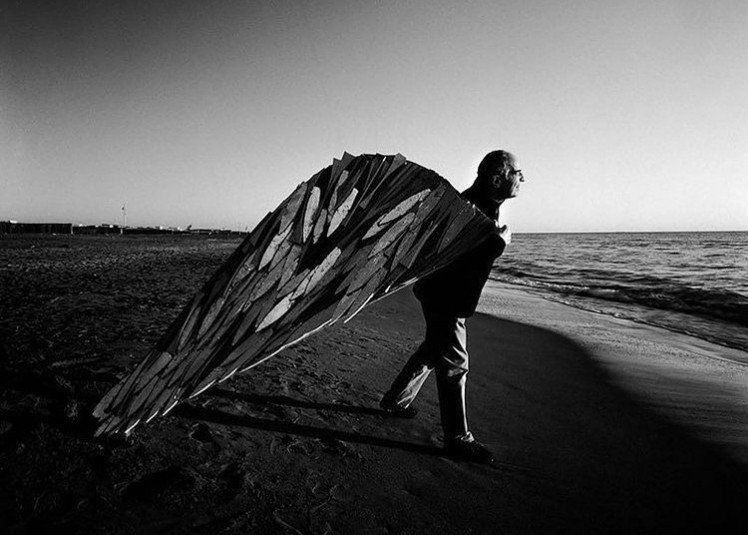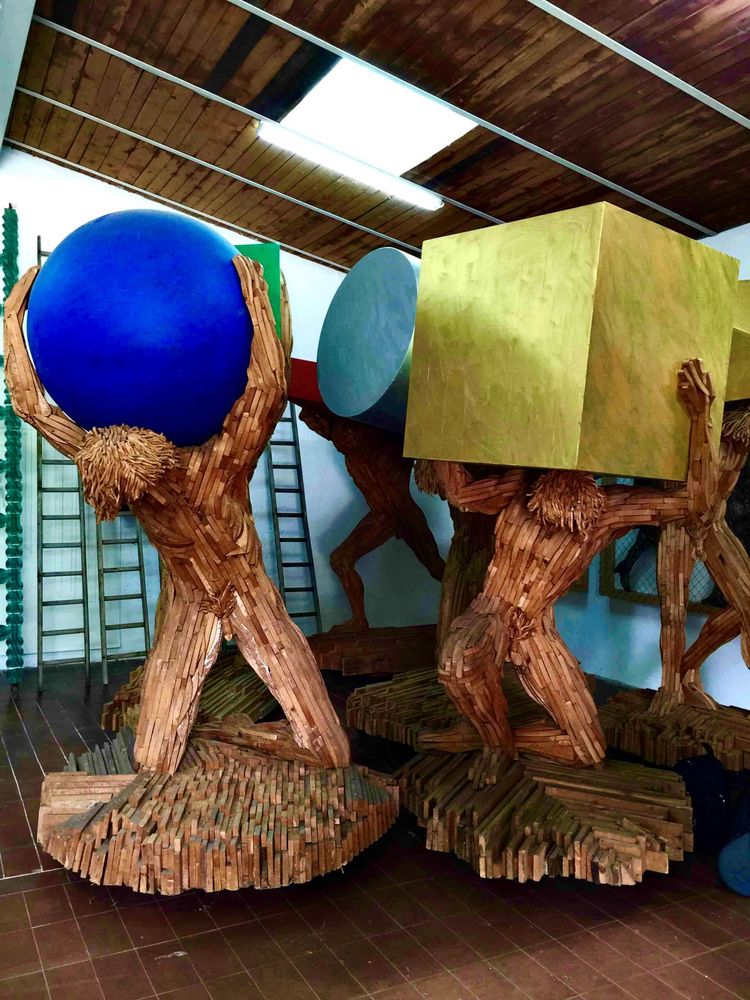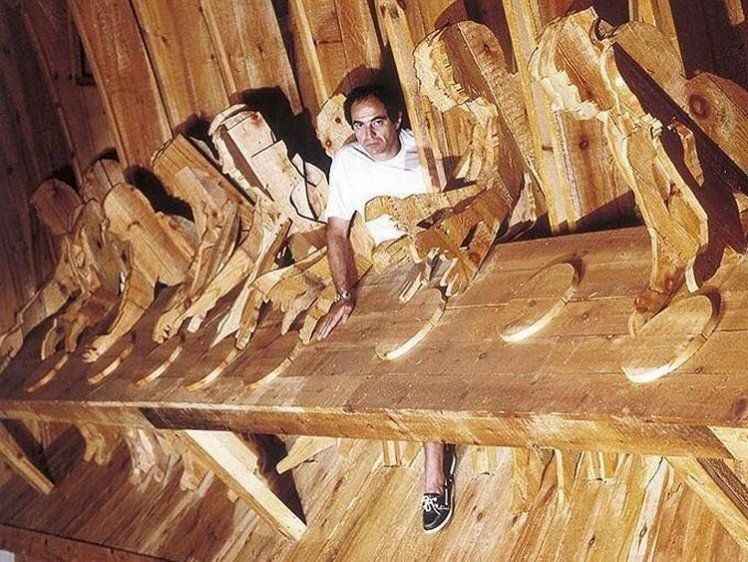The ultimate representation of contemporary Italian art
Expression of artistic creativity
Mario Ceroli is one of the greatest representatives of contemporary Italian art. An eclectic artist, sculptor, designer, architect, painter and set designer, throughout his long career, he has skilfully transformed a raw material, like wood, into indisputably beautiful works of art. Mario Ceroli was born in 1938 in a small village in the province of Chieti, but he began to take his first steps in Rome in the 1960s, during the Italian Pop Art period, a particularly happy moment in our contemporary art, distinguishing himself for his ability to combine modernity and tradition. The Master's artistic creativity ranges from the reinterpretation of famous works to the creation of large spaces, from the staging of theatrical works to the creation of large sculptures en plein air, between references to material reality and symbolic figures.
Mario Ceroli's genius lies in his ability to transcend aesthetic trends and conventions and become the spokesman for a new artistic movement, in the firm belief that experimentation with materials is the basis for a true artist's professional growth.
His great artistic talents enable him to use natural materials, such as wood, glass, earth and ice to create a triumph of geometries, inlays and masterly workmanship that can only be achieved and conceived by a great mind. Speaking of wood, Mario Ceroli affirms: "It is the only material that offers the possibility of immediately giving form to ideas; it is from this material that images spring".
Skilled in processing natural materials
Mario Ceroli is best known worldwide for his bronze or wooden horses, symbols of aspiration towards salvation, whose masterpiece is the bronze horse that stands in Saxa Rubra, at the centre of Rome's RAI headquarters.
Although his works are among the highest achievements of contemporary Italian art, they also reflect the search for the 'ideal beauty' theorised by Winckelmann back in the 18th century. In the unusual forms of his design works, the presence of Giorgio De Chirico's metaphysical painting is undeniably perceivable, to the point of paying homage to it. The ancient modernity of Mario Ceroli's works offers a unique aesthetic experience, an encounter between past and present and a total immersion in beauty.
The artist in the world
Mario Ceroli in the World: genius and artistic flair are the characteristics that have always distinguished this great artist who, despite his success, has maintained a genuinely artisan approach. Each of his creations is born from a precise design and constant work that leads him to produce unique, beautiful and harmonious works of art.
The great Italian artist is famous in Europe and throughout the world for his wooden sculptures, design works and for being considered one of the undisputed protagonists of a generation of artists who revolutionised the language of contemporary art from the 1960s onwards. In all his sculptures, the predominant element is experimentation with raw materials and the transformation of the values of 20th century painting into real objects. Mario Ceroli's international consecration already took place at the beginning of his career in 1966, with his award at the Venice Biennale, a fundamental moment in his life as an artist and the beginning of his fame abroad.
After his initial experiences as a ceramist, Mario Ceroli became involved in the Dada and Arte Povera movements, distinguishing himself from the outset by his preference for wood. It was during this period that his most famous works took shape, such as: Uomo di Leonardo (1964), La Cena (1966), Cassa Sistina (1966), La Porta (1981), Il Cenacolo (1981), Giorno (1982) e Notte (1982).
La Cassa Sistina (1966) earned him a Golin scholarship that allowed him to move to New York for three years.
In 1975, he was commissioned to decorate the church of Portorotondo and, a few years later, the church of Santa Maria Madre del Redentore in Tor Bella Monaca, Rome, in 1988. His 2001 series dedicated to Pinocchio is particularly relevant, as is his work as a set designer, such as the theatrical performance that Ceroli presented in 1969 in Berlin at the Renè Block Gallery. Solo exhibitions include those held at the Capital Museum in Beijing in 1999, at the Museo Nacional de Bellas Artes in Buenos Aires and at Castel Sant'Angelo in Rome, both in 2000.
Mario Ceroli's design works are explained by the Master himself with poetry and technique. A journey through time that has as its common thread the love for art, for truth mixed with genius and creativity that has always distinguished the artist's works.
Sala Ipostila, Letto Annabella and Rosa dei Venti are among the works cited by Ceroli, who describes his love for wood, a primary element in the lives of humankind since the beginning of time.
The works are entirely part of the "Mobili nella Valle" series, a collection of wooden art furniture with an elegant and innovative design.













